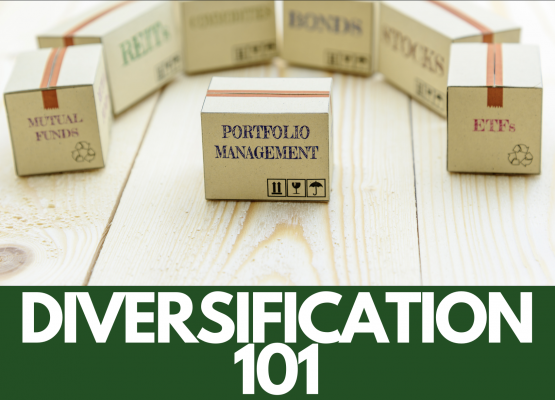Investing can be a powerful tool for building wealth and achieving your financial goals. However, navigating the complicated world of the securities industry, or real estate, or bonds, ETFs, mutual funds, etc. can be overwhelming, especially for beginners. To set yourself up for success, it’s crucial to avoid common mistakes that can hinder your progress.
In this article, we’ll explore some of the most frequent investing pitfalls and provide actionable strategies to overcome them:
Mistake #1: Lack of Planning and Goal Setting
The Problem: Diving into investing without a clear plan is like driving without a destination. You might stumble upon some interesting opportunities, but it’s unlikely you’ll reach your desired outcome.
The Solution: Before you start investing, define your investment goals & objectives. Are you saving for retirement, a down payment on a house, or your child’s education? Each goal has a different timeframe and risk tolerance.
Once you’ve identified your goals, set realistic expectations for the amount of time and money required to achieve them. Research average historical returns for different asset classes and use online calculators to estimate potential future growth.
Actionable Tip: Dedicate time to creating a financial plan. This can be a simple document outlining your goals, investment timeline, risk tolerance, and asset allocation strategy.
Mistake #2: Chasing “Hot Tips” and Emotional Investing
The Problem: Social media and financial news are often filled with “hot tips” promising quick and easy returns. This can lead to impulsive decisions based on emotions like excitement, fear, or greed, often resulting in poor investment choices.
The Solution: Recognize that sustainable wealth creation is a long-term game. Don’t chase get-rich-quick schemes or blindly follow others’ recommendations. Instead, conduct your own thorough research, understand the underlying fundamentals of the investments you consider, and remain disciplined in your approach.
Actionable Tip: Develop a habit of independent research. Utilize credible financial resources like annual reports, industry publications, and reliable financial websites before making any investment decisions.
Mistake #3: Failing to Diversify
The Problem: Putting all your eggs in one basket is a risky proposition. If that one investment performs poorly, your entire portfolio can suffer significant losses.
The Solution: Diversification is the key to mitigating risk and protecting your capital. Spread your investments across various asset classes such as stocks, bonds, real estate, and commodities. Within each asset class, diversify further amongst different sectors and companies. This helps to ensure that the negative performance of one investment is offset by the positive performance of others.
Actionable Tip: Consider investing in low-cost index funds that offer instant diversification across a broad range of stocks or bonds. These funds typically come with lower fees and offer a passive investment approach, making them suitable for both beginners and seasoned investors.
Mistake #4: Ignoring Risk Tolerance
The Problem: Every investor has a unique risk tolerance. Some are comfortable with the volatility that comes with investing in stocks, while others prefer the stability of bonds. Ignoring your risk tolerance and investing in assets that are too risky for your comfort can lead to anxiety, emotional selling decisions, and potentially lower returns.
The Solution: Before investing, honestly evaluate your risk tolerance. Consider factors like your age, financial goals, time horizon, and emotional response to market fluctuations.
Actionable Tip: Invest according to your risk tolerance. Younger investors with a longer investment horizon can generally handle more risk and invest in growth-oriented assets like stocks. Conversely, individuals nearing retirement may prioritize income and capital preservation, favoring bonds and other less volatile investments.
Mistake #5: Reacting to Market Fluctuations and “Timing the Market”
The Problem: The stock market is inherently cyclical, experiencing periods of both growth and decline. Investors who panic and sell their holdings during market downturns can lock in losses and miss out on potential recovery. Additionally, attempting to “time the market” by buying low and selling high is notoriously difficult and often leads to missed opportunities.
The Solution: Maintain a long-term perspective and avoid making emotional decisions based on short-term market movements. Remember, market fluctuations are normal and should not derail your long-term investment strategy.
Actionable Tip: Develop a disciplined investment plan that outlines your investment strategy, asset allocation, and rebalancing schedule. Stick to your plan through market ups and downs, and avoid the temptation to make impulsive decisions based on short-term market noise.
Conclusion:
Investing can be a rewarding journey, but it’s crucial to be aware of the potential pitfalls. By avoiding the common mistakes highlighted above, setting realistic goals, and adopting a disciplined approach, you can significantly increase your chances of achieving your financial aspirations. Remember, investing is a marathon, not a sprint. Be patient, stay agile, and consult with a financial advisor or other professional if needed.




